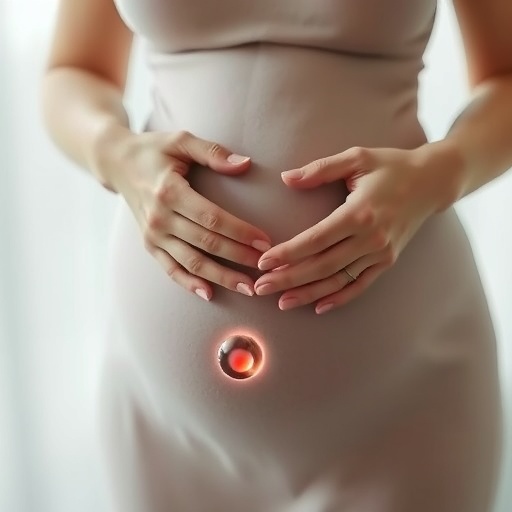
In a groundbreaking study published in the Journal of Ovarian Research, researchers Huang, Lee, and Huang delve into the complex interplay of spontaneous ovulation, hormonal profiles, and the timing of progesterone administration. This research specifically addresses its influence on the success rates of natural proliferative phase frozen embryo transfer cycles, utilizing single euploid blastocyst transfers. The findings of this study not only expand the understanding of reproductive endocrinology but also have significant implications for assisted reproductive technology.
For couples struggling with infertility, the specifics of embryo transfer protocols can often mean the difference between success and failure. The emergence of advanced reproductive technologies has revolutionized how fertility specialists approach treatment. Among these techniques, the transfer of euploid embryos—those that have been genetically tested and confirmed to have the correct number of chromosomes—has gained considerable traction. However, the nuances of timing regarding both ovulation and hormonal supplementation have remained relatively under-explored.
The process of natural selection within frozen embryo transfer cycles offers hope yet requires meticulous timing and understanding of the female reproductive cycle. The researchers’ focus on spontaneous ovulation illuminates the inherent variability in hormonal fluctuations, which can significantly affect implantation rates and overall pregnancy success. Their study highlights how individual hormonal profiles can diverge, influencing the optimal timing for the transfer of embryos.
Progesterone, a critical hormone in the menstrual cycle and pregnancy, plays a key role in preparing the uterine lining for implantation. The study reveals that variations in the timing of progesterone administration can lead to different outcomes in embryo transfer cycles. This raises important questions around the standard protocols used in fertility clinics and suggests that a more tailored approach may improve success rates.
In examining the results of their study, the authors note that cycles demonstrating precise synchronization between ovulation and progesterone administration yielded higher pregnancy rates compared to those with less optimal timing. Such findings underscore the need for reproductive endocrinologists to consider each patient’s unique hormonal landscape when devising treatment plans. It is essential to recognize that the body does not always adhere to cookie-cutter protocols; thus, personalized medicine continues to emerge as an essential component in reproductive health.
The methodology employed in this research was comprehensive, analyzing a diverse cohort of participants to gather data on hormonal profiles associated with successful embryo implantation. By integrating advanced statistical modeling, the researchers were able to draw correlations between hormonal levels and transfer outcomes. This scientific rigor enhances the reliability of their conclusions while paving the way for future research.
Interestingly, the communication of findings within the scientific community is crucial. The implications of these results extend beyond individual practices and reach into the broader discussions within reproductive medicine. As reproductive technologies continue to evolve, fostering an environment where information can be shared and debated will only enhance the collective understanding of fertility treatments.
Moving forward, the authors advocate for ongoing research to further dissect the hormonal dynamics at play during the embryonic transfer process. Delving deeper into progesterone’s varying effects on different patient profiles could unveil intricacies that refine treatment approaches. For practitioners, understanding these subtleties may lead to improved strategies that embrace a more individualized care model.
Moreover, as fertility issues continue to rise globally, addressing these challenges through refined medical practices can lead to increased access to reproductive health. The study’s findings can serve as a catalyst for public health policies that prioritize investments in reproductive technologies, ensuring that more individuals and couples can achieve their dream of parenthood.
In closing, Huang, Lee, and Huang’s influential work significantly contributes to the ever-evolving narrative of reproductive health. By shedding light on the critical relationship between hormonal profiles and embryo transfer success, they have provided valuable insights that could help refine fertility treatment protocols. As this research resonates within the scientific community, it is hoped that it will inspire further studies in pursuit of optimizing reproductive outcomes.
The narrative surrounding infertility is not just about biology; it intertwines with emotional and psychological dimensions as well. The burden of unsuccessful embryo transfers can weigh heavily on couples seeking assistance. By improving success rates through informed treatment strategies, healthcare practitioners can significantly alleviate this psychological burden.
Ultimately, Huang et al.’s findings underscore the importance of embracing flexibility and adaptability within treatment protocols. Fertility specialists equipped with an understanding of individualized hormonal responses are better positioned to support their patients through often challenging journeys toward conception.
With over 155 million individuals and couples worldwide experiencing infertility, studies like this one pave the way toward a more hopeful and informed future in reproductive health. As research continues to evolve, it is paramount that advancements in technology and understanding do not just remain within the confines of academic journals but are translated into tangible benefits for patients seeking assistance.
This study prompts essential conversations around reproduction, urging both medical professionals and patients to advocate for personalized care and varied approaches to treatment. It remains imperative for the voices of research and lived experiences to converge in the effort to reshape the landscape of fertility treatments, moving beyond standardization toward bespoke solutions that honor the richness of human diversity.
Subject of Research: The influence of hormonal profiles and progesterone timing in natural proliferative phase frozen embryo transfer cycles.
Article Title: Spontaneous ovulation, hormonal profiles, and the impact of progesterone timing variation on outcomes in natural proliferative phase frozen embryo transfer cycles with single euploid blastocyst transfer.
Article References: Huang, TC., Lee, W.HY., Huang, MZ. et al. Spontaneous ovulation, hormonal profiles, and the impact of progesterone timing variation on outcomes in natural proliferative phase frozen embryo transfer cycles with single euploid blastocyst transfer. J Ovarian Res 18, 154 (2025). https://doi.org/10.1186/s13048-025-01742-y
Image Credits: AI Generated
DOI:
Keywords: Frozen embryo transfer, euploid blastocyst, spontaneous ovulation, hormonal profiles, progesterone timing.
Tags: assisted reproductive technology implicationseuploid blastocyst transfersfrozen embryo transfer cycleshormonal fluctuations and implantation rateshormonal profiles in fertilityimpact of progesterone on pregnancy successinfertility treatment protocolsnatural selection in embryo transferprogesterone administration timingreproductive endocrinology advancementssignificance of genetic testing in embryosspontaneous ovulation and fertility




